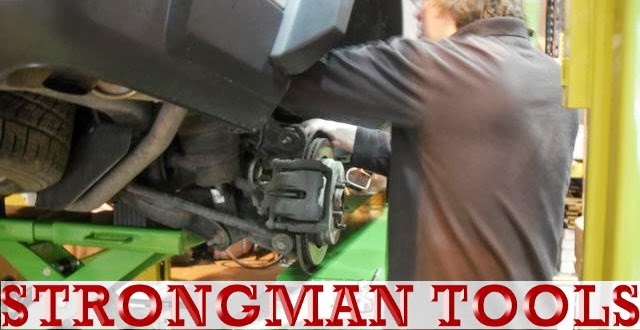The vast majority of car lifts do not employ a "Soft-Start" mechanism to mitigate surge currents when the "UP" button is first pressed.
The power supply to your workshop will have fuses or circuit breakers (often called miniature circuit breakers, MCBs), which are rated in Amps for a given voltage. A circuit breaker is a resettable electro-mechanical switch that automatically trips if the current through it exceeds a preset threshold. Because its core component is a thermal or magnetic operated device it can accept an overcurrent situation for a pre-determined length of time. Most modern domestic premises will have "Resistive", 'A' or 'B' type circuit breakers installed, these will trip quite rapidly in an overcurrent situation.
As Car Lifts are industrial items they will draw overcurrent at start up for somewhat longer than average Domestic equipment, for this reason a motor rated circuit breaker should be installed throughout the circuit that feeds the workshop: an "Inductive" 'C' or 'D' rated breaker will be necessary to ensure that the board doesn't trip every time the lift is used!All electrical work should follow the safety standards in BS 7671 (the 'wiring regulations') which can be found on the British Standards Institute (BSI) website.
All Strongman Tools Single Phase Lifts must employ a suitable 16A Motor Rated Breaker in the supply.
